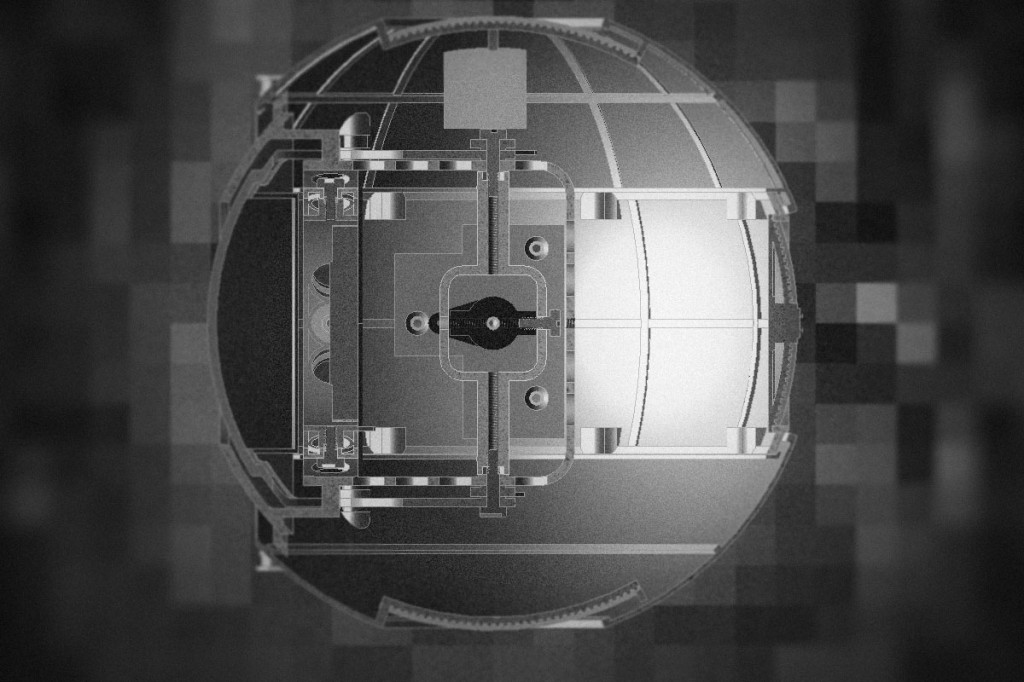The design of Wheatley started when I made a static model for my daughter and she said how cool it would be if it were motorized. We had made a small, static one, but I told her we could do a larger one motorized, though the costs might be a challenge.
We discussed that the cost is based on the volume of material used, the volume of a sphere, how to calculate the volume of material in a thin section of a sphere, and were pleasantly surprised that it wasn’t going to break the bank.
We decided on a 6″ outside diameter as being grand yet affordable.
Math
Volume of a sphere= 4/3 * pi * r^3
Volume of a section of a sphere (4/3 * pi * OuterRadius^3) – (4/3 * pi * InnerRadius^3)
The minimum wall thickness of 1mm from Shapeways was decided upon, with thicker ribs throughout, adding minimal thickness, and engineering wise, putting us into the “hey, it can’t hurt” category of engineering.
Initial Design
The approach I decided upon is the outside-in approach, as we pretty much knew that bigger than around 6 inches outer diameter would increase the costs in a crazy way. This may have been a mistake, but nothing is set in stone yet.
I started with a very rough cosmetic model, just trying to understand the internal volume, and the requirements of the initial motion. Studying the video game, online videos, and slogging through official images versus people’s interpreted renderings. I don’t have any images of the proto-stages of Weatley’s development, words will have to suffice.
Things rapidly became very clear that there wasn’t as much internal volume as I thought. I have the tattered remains of several hexapod walking robots, and I had hoped to salvage their sub-micro servos but their combined volume was too much for the internal volume.
Pushing Forward
I knew that anything worth doing is worth doing in the extreme, so I set the design goals high.
- The “face” should have pan , tilt and roll articulation
- The handlebars should be individually articulated
- The eye should be articulated in pan and tilt
- The eye should have either an actual aperture to dilate the iris, or better yet, a digital display to simulate other cores.
- There eye should have independent eyelids.
- small embedded microcontroller or microcomputer with audio capability.
- show control software to synch the audo to the motions.
- potentially develop a “waldo” for programming

